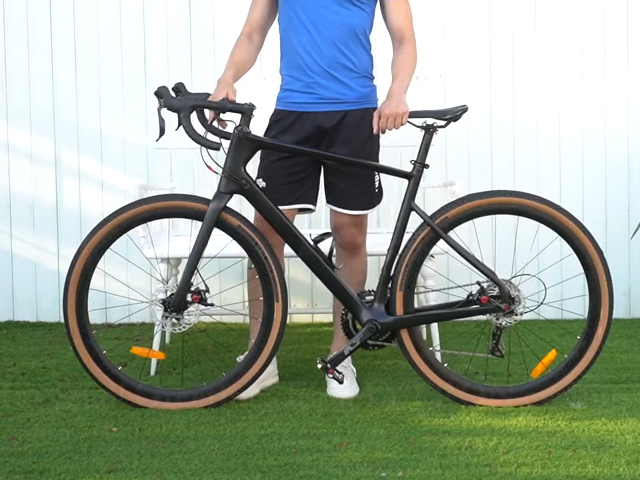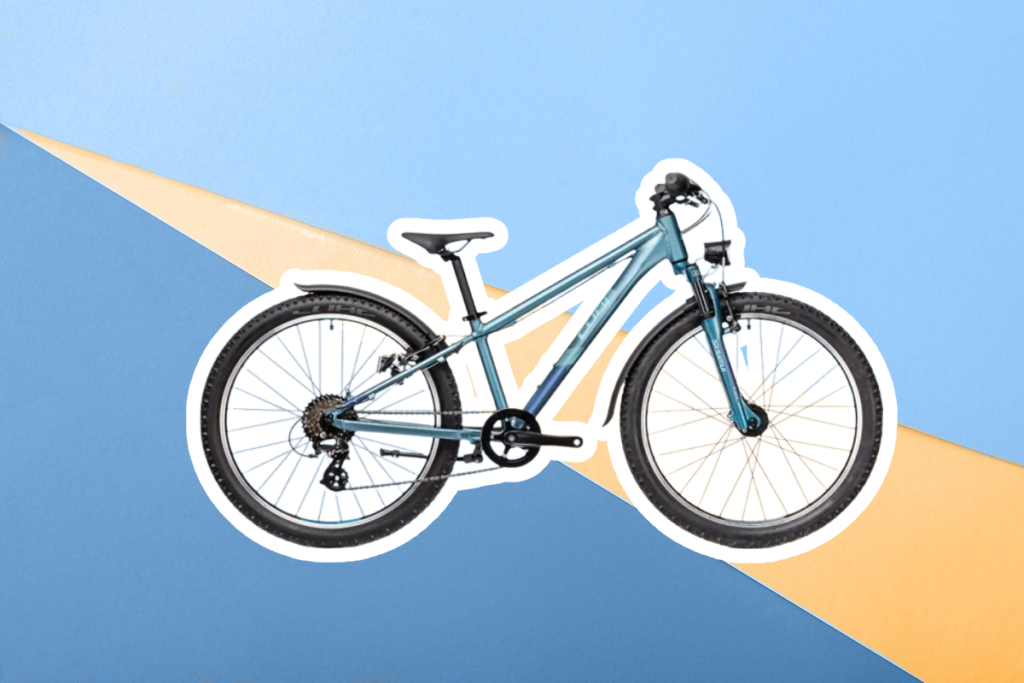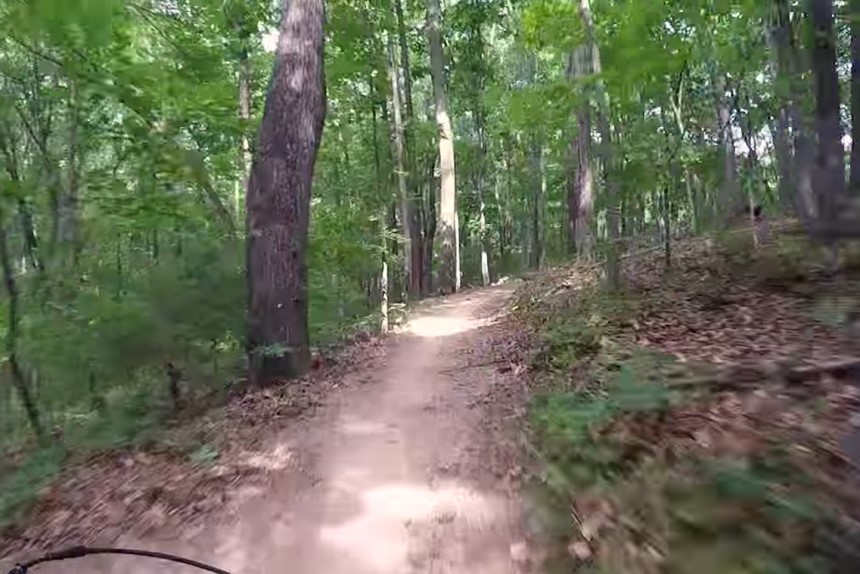- Trails
-
Bikes
-
Gear
-
Tips & Tricks
-
About us


Everyone instinctively stays indoors during the snowy winter season. You may miss cycling outside and have an intense urge to go, but can you ride a bike in the snow? Absolutely. Although it is not easy, you can ride a bike in the snow. It is just as tricky as any method of getting around during winter, but with proper planning and practice, you can control your bike and ride safely in the snow.
This article looks at the crucial factors to consider before biking in winter. It has tips for safe rides on slushy, wet, packed, and hard-packed snow surfaces. You will also know if your bike is suitable for snow conditions and how you can plan for cycling success.
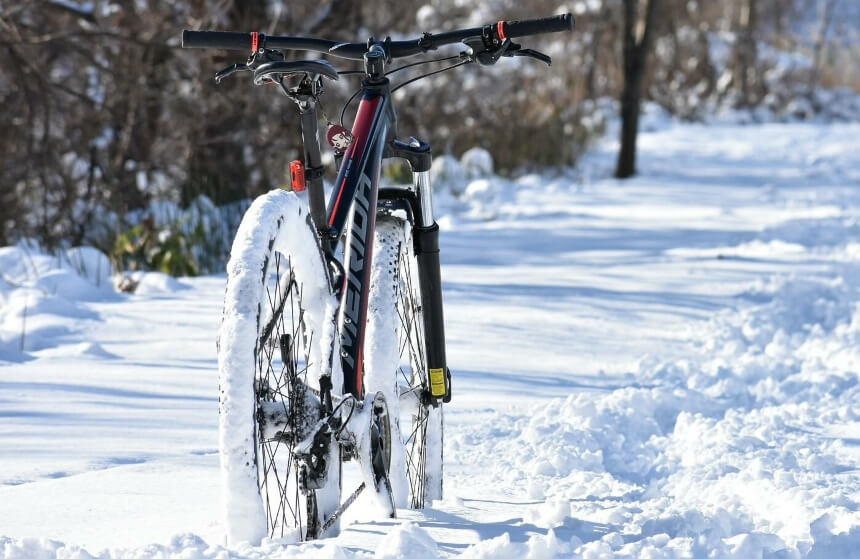
Slushy surfaces have a wet and loose, thin layer of snow. Wet surfaces have a thick layer of snow that is continuously wet. Slushy conditions, also known as sloppy conditions, have a low friction coefficient, posing the risk of losing control. You must be extra cautious when riding on slushy and wet surfaces. Ride at the lowest speeds.
Packed surfaces have a firm, thick layer of snow. Hard-packed surfaces have thicker and firmer snow packed down. They have a high friction coefficient, thus will unlikely make you lose control. This means biking on a hard-packed surface is safer than on a slushy and wet surface.
Since biking in winter is a challenge, you must be mentally and physically ready. You can get over-excited and over-ambitious about the challenge and forget about full mental commitment and physical readiness. Ensure you are in good shape physically and are well-rested. Taking on the challenge when tired from another activity will take a toll on you.
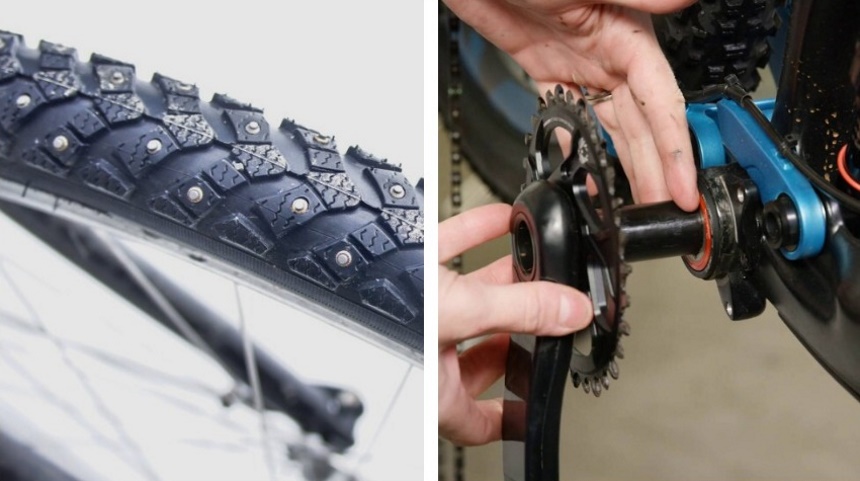
Here is how to know if your bike is fit for the road or mountain biking in winter and how you can make it ideal for the challenge;
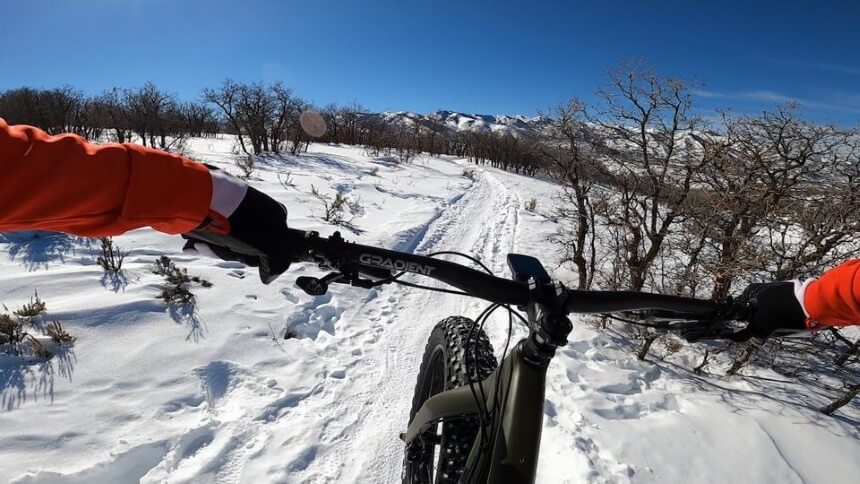
Choose a route that has less traffic to increase your safety. You may end up paying for someone’s mistakes which you are avoiding in the risky snowy conditions.
Avoiding high traffic will increase your snow cycling success. On weekdays, avoid rush hours in the mornings and evenings when the streets are busy with people commuting to work. A GPS with a live traffic view will help you choose an optimal time of the day to go cycling. You will have more flexibility on weekends as many people prefer to stay indoors in snowy weather.
Don’t assume the next day’s weather will be similar to today’s.
In snow conditions, it is even more critical to check the weather forecast as a slight change in conditions, like sudden gusty winds, blizzards, or powdered snow, may force you to cancel the cycling experience.
Wind gusts will blow the snow on the ground and blind you completely. Since riding on a snowy surface is already a risk, you wouldn’t want to increase the risk of being visually impaired. Heavy snowfall during the ride can also reduce your visibility.
As mentioned earlier, proper preparation is critical. Lack of preparation can lead to the worst, unsafe experience, which you must avoid at all costs. Here is what proper preparation for a snowy bike ride entails;
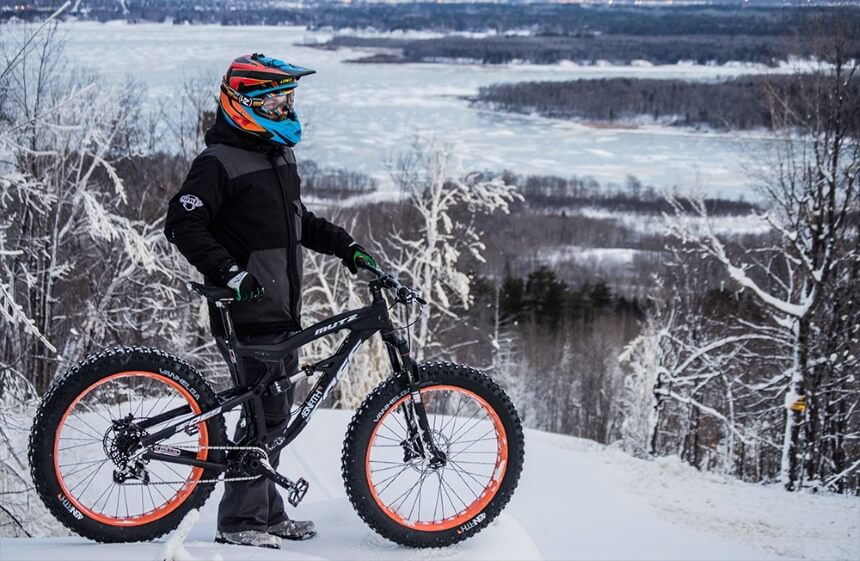
You may think it is unnecessary to hydrate when the temperatures are too low, but it is just as important as during summer. Riding a bike on snow requires a lot of effort, which will make you sweat and lose a lot of water. You will get dehydrated but fail to notice because of the cold.
Carry a water bottle or a hydration pack with you for a snow ride. A hydration pack is more convenient as you can easily sip from it without stopping.
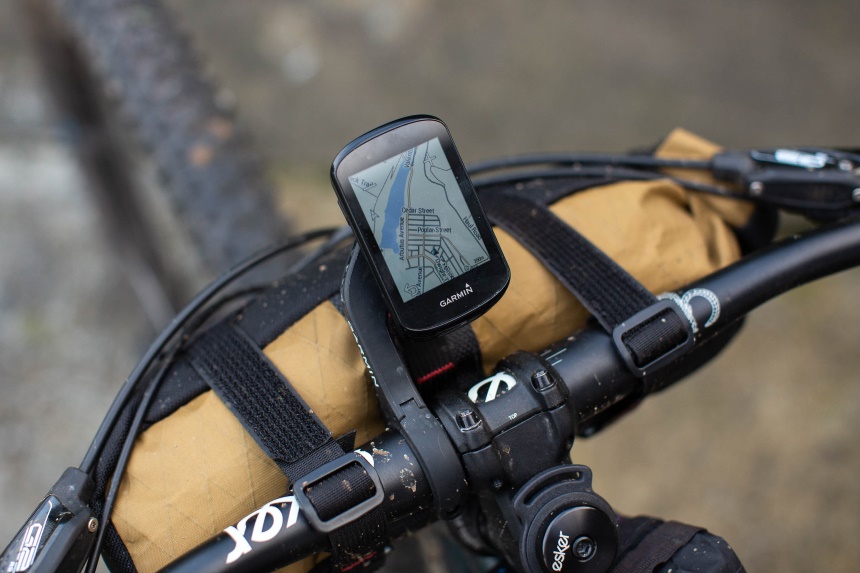
Biking, like any other sport, has risks. You may slip, fall, or tumble and injure yourself. A top-quality first-aid kit will treat the minor injuries you suffer when you slip or fall on slippery snow surfaces. Treating an injury immediately is goes a long way in ensuring a quick healing process.
Although carrying a cell phone is a great way of staying in touch, it is important to inform a friend or family of your cycling plans. You can’t rely on the cell phone alone, as you may accidentally mute it or become isolated because of signal issues. Informing a family member or friend about your routes and timing is a crucial safety step.
You cannot cycle fast on snow. If you are in a hurry to get somewhere or are time-bound for whatever reason, it is better to postpone your ride for when the weather is friendlier. Riding fast on snow is a mistake you are likely to regret. Keep a slow, controlled, and balanced pace for your safety. Reduce your pace even more when making turns to avoid slipping.
Remember, you have to be mentally and physically ready to enjoy a snowy ride. Avoid activities that can wear you out the day before the snow cycling sport. Cycling on snow requires more effort . Therefore, rest your body to prepare your muscles for the challenge.
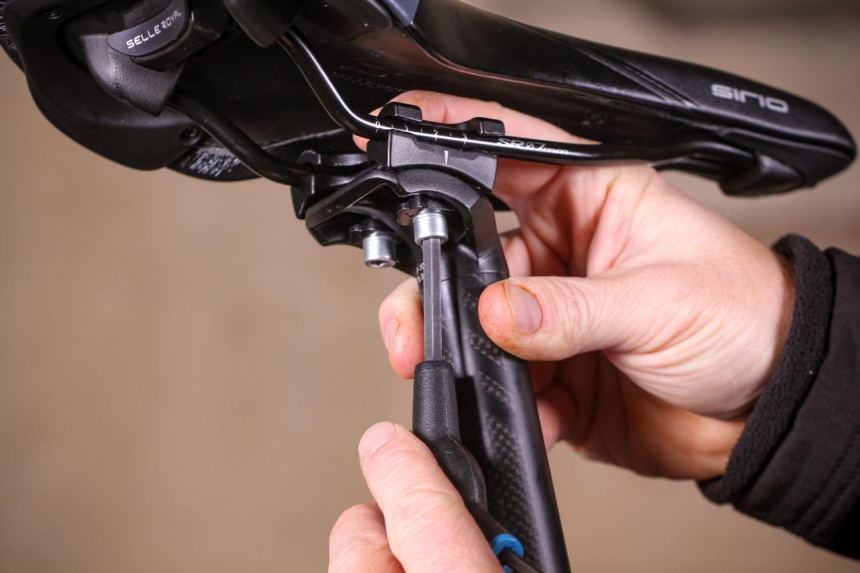
Avoid turning, braking, or pedaling on snow surfaces. Smoothly coast over the ice and if you need to slow down or stop, gently brake on the back. Avoid using the front brake because you must keep the front wheel rolling. You can use it with the back brake simultaneously in a light manner that keeps the front wheel running.
Remember to give yourself time before slowing down or stopping, especially when approaching junctions or corners.
Ride at a low gear and with lower tire pressure than the bike’s recommended maximum but not too low, as it will be hard to keep things running smoothly if you are spinning the pedals and the back wheel.
Lowering your seat allows you to put your feet on the ground easily in case you lose balance. Moreover, lowering your seat lowers your center of gravity, making the bike less wobbly. It sounds like a small change but it goes a long way in helping you navigate the unpredictable icy riding path.
Also, remain seated when cycling on the snow. Standing may be your go-to riding position during summer, but on the snow, it is important to stay seated so you can provide the tires with additional friction. Your body weight will help your tires navigate the slippery, uneven snowy surface, making for a safer and easier ride.
Lights are essential bike accessories Trusted Source Bicycle Safety Active lighting may improve the visibility of bicyclists and is required by law in most states when bicycles are ridden after dark.7 Active lighting includes front white lights, rear red lights, or other lighting on the bicycle or bicyclist. www.cdc.gov that you should always have in all seasons. More riders have developed the habit of using lights all year round to alert other road users of their presence.
Lights are more important during winter as it can get very gloomy during the day on a regular snowy day. Choose small, lightweight, super-bright rechargeable LED lights for your bike. You can also get headlamps or helmet-integrated lights. Although they are not approved as official bike lights by the road traffic licensing regulations, they can be handy in poorly lit paths. Having lights on the bike throughout eliminates the worry of being caught in the dark on shorter days.
Distributing your weight on the bike during the ride will help you stay balanced. Distribute your weight evenly over both tires and stay relaxed. Since your main goal is creating extra friction between your bike and the road, move forward and place some weight on the front wheel. At the same time, place some weight backward to keep your center of mass between the wheels making it harder for you to go end over the handlebars.
You can ride a mountain bike in the snow as its tires are fat enough not to drown in the snow. Make sure you lower tire pressure and opt for flat pedals; these will make your ride easier and more enjoyable.
Yes, you can do it, but keep in mind that you have to make some changes to your bike’s tires and take additional safety precautions. Also, consider getting nice equipment like a quality dirt jump bike. We’ve prepared a list of the best dirt jump bikes, you can have a look at the top-rated options that won’t let you down and leave you freezing outside.
Biking in the snow, although challenging, is possible and can be a fun way of overcoming winter’s boredom. You only have to prepare for the ride properly. Check the weather and choose a winter-friendly route. Get the right gear for yourself and the bike. Your gear should keep you warm and the bike’s gear should winter-proof it and make your ride easier and enjoyable. Also, before you go cycling on the snow alert a friend or a family member as it is a risky activity.
Can you ride a bike in the snow? We have provided a solid answer to this popular question and extra tips on how to cycle in the snow safely. Remember to eat and stay hydrated as it is an effortful activity.
